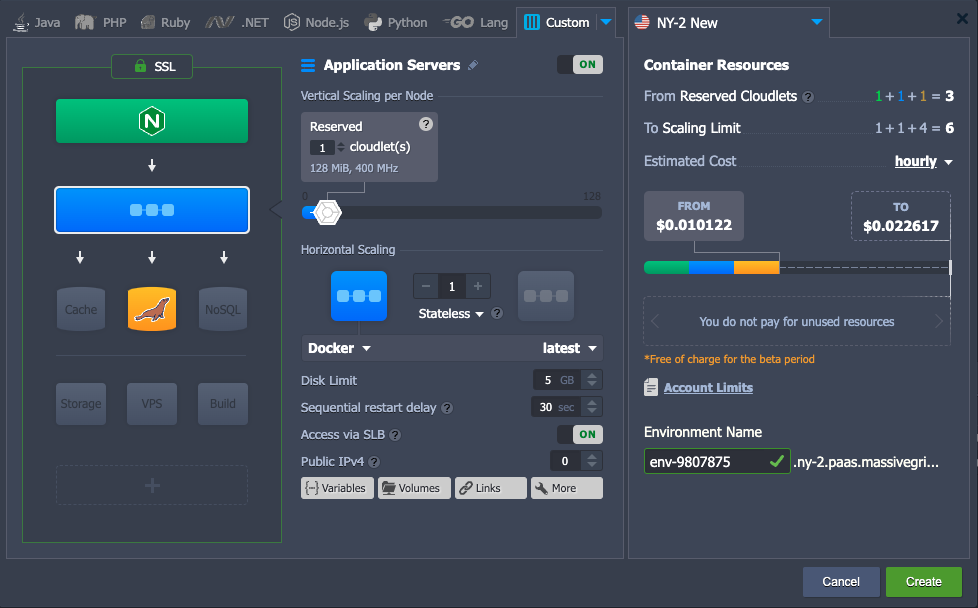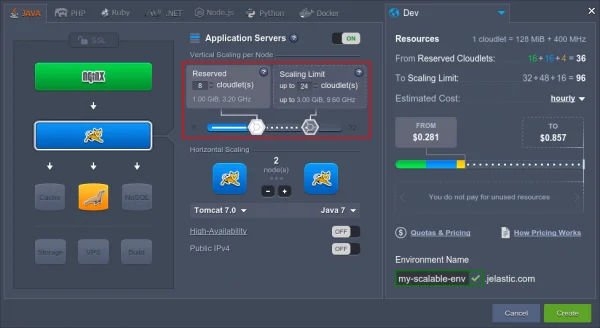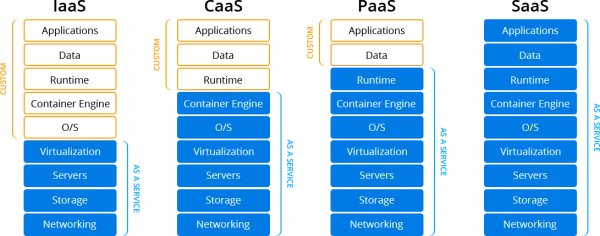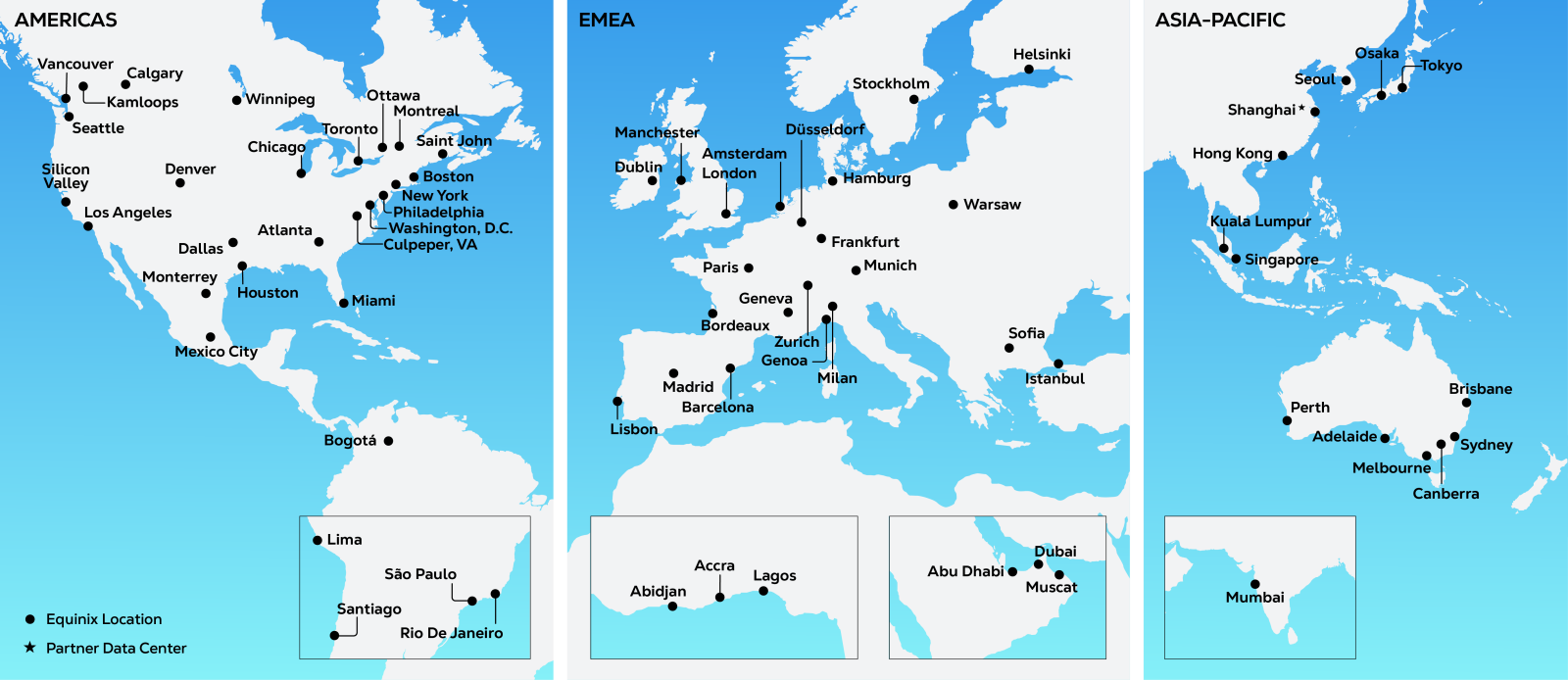Specifications
Automated Provisioning via UI and API
The production and dev environments are created in minutes within user-friendly topology wizard, or via API, SSH, CLI. Run Java, PHP, Python, Node.js, Ruby, .NET, Go, Docker Swarm or Kubernetes based applications using a rich variety of SQL and NoSQL databases, app servers, balancers and storage containers with no manual configurations required for installation.
Zero Code Change Deploy
Deploy and run legacy monolithic applications and cloud-native microservices with no code changes and zero lock-in. The deployment can be easily performed using GIT or SVN with automatic updates, archives (zip, war, jar, ear) right from the dev panel or via integrated plugins like Maven, Eclipse, NetBeans, IntelliJ IDEA.
Cloud-Native and Traditional Applications Support
Application and system containers support, as well as zero code change approach provide the ability to run both cloud-native microservices and legacy monolithic applications. Our PaaS supports all the Open Source technology stacks making easy to deploy cloud native applications.
Automatic Vertical and Horizontal Scaling
Elastic automatic scaling enables granular resource allocation based on the load level. This ensures high performance, application availability and uptime, at the same time, cost efficiency by paying only for really consumed resources.
Managed Clustered Solutions within Marketplace
Pay-per-Use Pricing Model
There is no need to reserve resources, as the platform allocates them automatically based on the current load and using a small scaling step (128 MiB of RAM and 400 MHz of CPU). As a result, the consumed resources are billed only but not the VM limits. There is also a free trial to get started with the cloud platform.
Testimonials
John Fitzgerald
Their team is always trying to help, and their prices are reasonable for the high-quality services they provide.
Thank you for your help!
Xi Yeka
Thrilled with MassiveGRID! Tailored High-Availability, solid infrastructure & amazing support. Boosted site performance & customer satisfaction!
Sandip Boral
We are hosting mission critical servers within MG H/A Private Cloud since 2020. Absolutely flawless, 100% uptime, prompt & quality support from UK & USA based team.
Benefits using our Docker Cloud Hosting PaaS
Innovate faster while saving money
- Simplify, automate, and avoid the costly steps of setting up the foundation for your application
- Build, deploy, iterate, adapt and manage your application more rapidly over time
- Reduce the cost of server storage and overhead, network bandwidth, maintenance, and support personnel for end-users
Simplify operations and management
- Minimise the operational complexity by leveraging cloud-based platforms to automate and consolidate processes with easy integration using APIs
- Provide a more uniform and predictable OS/middleware environment by having service providers automate and control it
- Streamline application management, while maintaining complete application control and eliminating underlying infrastructure duties
Boost technology and offerings
- Get the latest technology with faster page loads and better uptime, combined with an enhanced user interface and experience
- Offer a wide range of applications and build unique solutions by tapping into the many niche market options offered by PaaS service providers
- Simplify and enhance the end-user experience by allowing them to seamlessly share data between solutions.
Scale apps, not costs
- Keep costs low and easily optimize resources and costs as you scale apps. By running App Platform on MassiveGRID’s infrastructure, we make it simpler for you to control costs.
- Scale horizontally or vertically to handle planned or unplanned traffic spikes.
- Maximize availability with zero downtime deployments. Your apps remain available not only when you scale up or out, but also when you roll out new changes.
Features of our Docker Cloud Hosting PaaS
What can you build with PaaS?
Web apps
Build dynamic apps in popular languages like Python, Node.js
Static sites
Create websites that are fast, secure, and highly scalable
APIs
Add automation via APIs
Background workers
Improve efficiency by adding background workers
Pricing
MassiveGRID Platform as a Service provides a unique process of automatic scaling with payments based on real consumption instead of server size.
Pay-per-Use Pricing for Ultimate Platform as a Service Flexibility
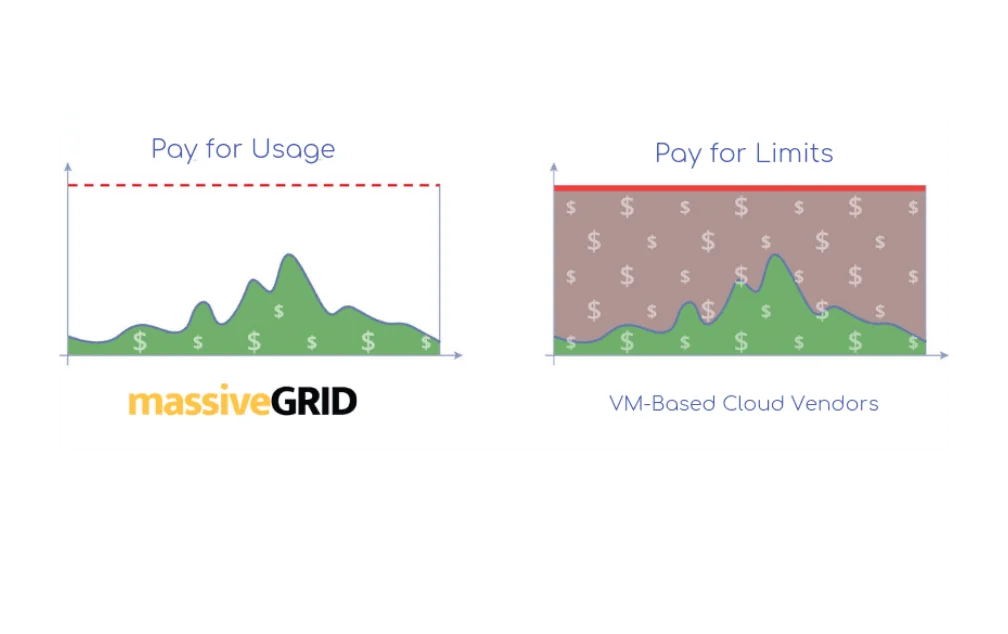
RAM and CPU consumption is monitored for each container. You are charged only for the resources utilized, not the limits.
You can set up a maximum Scaling Limit for each container, so the resources will be always available in case of load spikes or other consumption changes.
No matter how high the limit – the payment will be only based on real usage. The rest of the allocated resources will be just waiting in the pool for the application to request them, and it is totally free of charge. This is why Platform as a Service is the next generation of Cloud Hosting.
